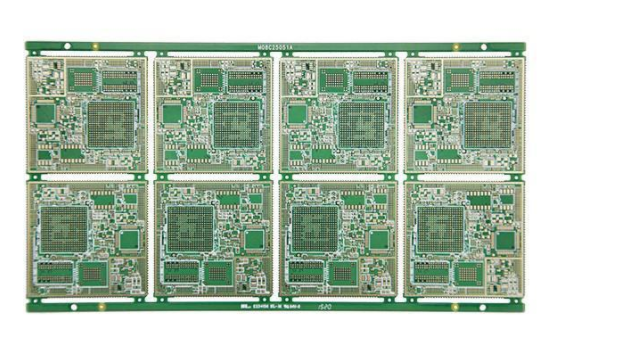Analysis of the Causes of Exposure of Copper in PCB Spray Tin Board
Tin spraying is to immerse the PCB circuit board in molten solder (63SN/37PB), and then use hot air to blow off the excess solder on the surface of the PCB circuit board and the metallized holes to obtain a smooth, uniform and bright solder coating Floor. The lead-tin alloy coating layer on the printed circuit board surface after tin spraying should be bright, uniform and complete, with good solderability, no nodules, no semi-wetting, and no exposed copper in the coating. Exposure of copper on the surface of the solder pad and the metallized hole after tin spraying is an important defect in the inspection of finished products. It is one of the common causes of rework after tin spraying. There are many reasons for this problem. The common ones are the following.
The surface of the pad is dirty, and there is residual solder resist contaminating the pad.

At present, most manufacturers use full-board screen printing liquid photosensitive solder resist ink, and then remove excess solder resist through exposure and development to obtain a time-based solder resist pattern. In this process, the pre-bake process is not well controlled, and the temperature is too high and the time is too long will cause development difficulties. Whether there are defects on the solder mask film, whether the composition and temperature of the developer are correct, the speed during development is whether the developing point is correct, whether the nozzle is clogged, whether the nozzle pressure is normal, whether the water washing is good, any of these conditions will be on the pad Leave residual points. For example, the exposed copper formed due to the negative film is generally more regular, all at the same point. In this case, a magnifying glass can be used to find residual traces of solder resist material at the exposed copper. Generally, a post should be set up in PCB design to inspect the graphics and the inside of the metallized hole before the curing process to ensure that the PCB circuit board is sent to the next process. The pads and metallized holes are clean and free of solder mask ink residue.
2. Insufficient pretreatment and poor coarsening.
The quality of the pre-treatment process of the PCB board tin spraying has a great influence on the quality of the tin spraying. This process must completely remove the oil, impurities and oxide layers on the pads to provide a fresh solderable copper surface for the immersion tin. The more commonly used pretreatment process is mechanical spraying, firstly sulfuric acid-hydrogen peroxide micro-etching, acid pickling after micro-etching, then water spray washing, hot air drying, spraying flux, and immediately spraying tin. The copper exposed phenomenon caused by poor pre-processing occurs in large numbers at the same time regardless of type and batch. The exposed copper points are often distributed over the entire board surface, and are even more serious on the edges. Using a magnifying glass to observe the pre-processed circuit board will find that there are obvious residual oxidation spots and stains on the pads. In similar situations, chemical analysis of the microetching solution should be performed, the second pickling solution should be checked, the concentration of the solution should be adjusted, and the solution that has been used for a long time should be seriously polluted. Check whether the spray system is unblocked. Properly extending the treatment time can also improve the treatment effect, but it is necessary to pay attention to the over-corrosion phenomenon. The reworked circuit board is treated with 5% hydrochloric acid solution after tin spraying to remove the surface oxide.
3. Insufficient flux activity.
The function of the flux is to improve the wettability of the copper surface, protect the laminate surface from overheating, and provide protection for the solder coating. If the flux is not active enough and the wettability of the copper surface is not good, the solder will not be able to completely cover the pad. The copper exposure is similar to the poor pretreatment. Extending the pretreatment time can reduce the copper exposure. Almost all current fluxes are acidic fluxes, which contain acidic additives. If the acidity is too high, it will cause serious copper biting, which will cause the high copper content in the solder to cause rough lead and tin; if the acidity is too low, the activity will be weak, which will cause exposure. copper. If the copper content in the lead-tin bath is large, remove the copper in time. The selection of a stable and reliable soldering flux by process technicians has an important influence on spraying tin, and good soldering flux guarantees the quality of spraying tin. ipcb is a high-precision, high-quality PCB manufacturer, such as: isola 370hr PCB, high-frequency PCB, high-speed PCB, ic substrate, ic test board, impedance PCB, HDI PCB, Rigid-Flex PCB, buried blind PCB, advanced PCB, microwave PCB, telfon PCB and other ipcb are good at PCB manufacturing.